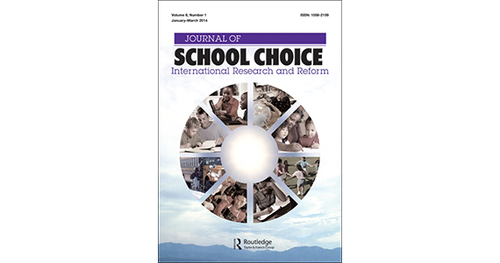VATICAN CITY - Attending a consistory for new cardinals is something of an ambivalent thing. On balance it is a positive experience, a festive occasion to be sure. Yet there is also an uneasiness, for there are touches of worldliness about it which ought to make a Christian disciple wary. A consistory is truly a celebration of something particularly Catholic, namely the Roman and Petrine dimensions of the Church. Such occasions of pride and joy strengthen the faith, as they reinforce the bonds of affection that unite Catholics with the successor of St. Peter. The link between the local bishop created a cardinal and the Bishop of Rome is evident enough, and it highlights the communion of all local bishops with the See of Rome, and therefore the unity of the Church universal. The presence in Rome of pilgrims accompanying the new cardinals gives a personal expression to that universality. Hearing Czech and Cantonese spoken in St. Peter’s Square makes concrete the reality that the Church is ever so much bigger than my own country, let alone my own diocese or parish. For countries where having a cardinal is something of a novelty, especially in places where the Church is undergoing hardship, the pride the pilgrims take in this national honour is truly moving. Even in places where cardinals are expected — like Toronto and New York — the excitement of numerous pilgrims is a welcome sign that the faithful have not grown weary, and that to love the Church is a necessary consequence of loving Christ Jesus. In a time when leaders in all spheres of life are challenged and even denigrated, a consistory encourages people to identify themselves with their own bishops — to travel with them, to pray with them, to celebrate with them, to see in their honours an honour for the local Church and for the entire country. Erosion of unity between the faithful and their shepherds damages the holiness and witness of the Church, so occasions that enhance that unity are to be welcomed. Finally, a consistory is a great pilgrimage to see Peter, the foundation of the Church’s unity. It is a pilgrimage for the cardinals themselves, both the new and the old, reminding them of their special and solemn solicitude for all the churches. It is a pilgrimage too for all the faithful who travel to Rome, and pilgrimage is a fundamental aspect of the Christian faith, whether it be to a local shrine or to the tomb of the apostle Peter. Why then the ambivalence? There is another dimension, highlighted by the comment heard from voices both secular and ecclesial, that the College of Cardinals is the “most exclusive club†in the world, rendering the consistory a fabulous initiation ceremony for the newest members. The aspect of a man achieving worldly success, of having finally climbed to the top rung of a career ladder, is not absent from consistory week. The ancillary aspects of careerism in the clergy — ambition, jealousy, vainglory — sometimes come to the fore, if not in the cardinals themselves, then certainly in the conduct of those who fawn over them. The priest is to be an icon of Jesus Christ, and amidst all the parties and revelry the face of Christ can be obscured rather than highlighted. Could this be what Pope Benedict had in mind when he commented upon the Gospel passage read at the consistory itself — the account of James and John asking for the prominent places in heaven? “James and John demonstrate that they do not understand the logic of the life to which Jesus witnesses, that logic which — according to the Master — must characterize the disciple in his spirit and in his actions,†the Holy Father said. “The erroneous logic is not the sole preserve of the two sons of Zebedee because, as the evangelist narrates, it also spreads to ‘the other 10’ apostles who ‘began to be indignant at James and John’ (Mk 10:41). They were indignant because it is not easy to enter into the logic of the Gospel and to let go of power and glory. St. John Chrysostom affirms that all of the apostles were imperfect, whether it was the two who wished to lift themselves above the other 10, or whether it was the 10 who were jealous of them.†So it was in the beginning, is now and ever shall be. I was pleased to be in Rome for the consistory. It was a blessed event. And part of the blessing, it seems to me, is to see that the logic of the Gospel remains always a challenge, especially for the clergy, all the more so for cardinals.

The logic of the Gospel is a challenge, and remains so, even for cardinals
February 22, 2012

Van Pelt at the Standing Committee on Finance
Cardus President Michael Van Pelt appeared before the Standing Committee on Finance, speaking to members on the importance of changes to charitable tax law. The video stream/download from the Committee is located here. Van Pelt appears at 11:45.
February 16, 2012

Cardus Makes Charitable Submission to Committee on Finance
On January 17, Cardus renewed the fight for a new charitable tax proposal. We made a submission to the Canadian federal government's Standing Committee on Finance. In it, we made two recommendations: An immediate and substantial increase to the charitable tax credit rate that is designed to provide benefits to the “civic core†of donors who, by their previous behaviour, have proven their reliability and likelihood of investing this back into the charitable sector. Continued financial investment in exploring and developing alternative forms of charitable and non-profit organizational structures that will be able to utilize financial and other capital effectively through development of new social enterprise platforms and approaches. This will require legal, financial, and regulatory innovations. Read our entire submission here .
January 17, 2012

Journal of School Choice releases special issue for Cardus Education Survey
January 1, 2012

Cardus makes prebudget submission to federal government
Click here to read the full submission . The decline in charitable giving in recent years is one of the consequences of the short-term economic challenges facing the country. What should not be overlooked is the longer-term trend in which fewer Canadians provide the vast majority of the giving, volunteering, and civic engagement on which our social infrastructure relies. There are many critical issues facing the sector which deserve intelligent policy support, a matter made more urgent by the demographic, immigration, and urbanization trends which confront us. As governments consider the limits of its own capacity in dealing with social issues, the maintenance of a strong not-for-profit sector is important in order to maintain a prosperous and sustainable standard for all Canadians. Although broader-reaching structural changes are urgent, immediate support is needed for charities to retain the capacity to meet the immediate demands for their services. We recommend the creation of an additional tax credits that will provide benefits primarily to that civic core of Canadians who are providing a hugely disproportionate share of the resources for the charitable sector, recognizing that those who already are giving are the most likely to respond to the short-term needs of this sector. We recommend: 1. That in recognition of the immediate challenges facing Canadian charities, an additional category be added to the charitable tax credit to provide a 37% tax credit for donations greater than $450 per year from a taxpayer; 2. That steps be taken to initiate a national conversation regarding the rules and framework within which the not-for-profit sector functions within our society so that structural changes can be implemented which allow for this sector to continue its important contribution to our social fabric; 3. That a sunset clause of five years be introduced for the new tax category in order to emphasize the urgency of implementing a longer-term strategic solution. Click here to read the whole Executive Summary.
August 12, 2011

Cardus Budget Analysis: Good News for Economy, Ho-Hum for Society
Introduction This is Cardus' analysis of the Government of Canada's budget for the fiscal year 2011-2012, released by the Hon. James M. Flaherty, Minister of Finance on Tuesday, March 22, 2011. There is some good news in this budget: deficit projections provided by Minister Flaherty last fall have proven overly dour. Canada's recovery, in raw economic terms, is a picture of success. This budget is filled with reminders on how well Canada is doing compared to international competitors in recovering from the recent economic challenges. Whether this budget, which contains a quite a few steps that are designed to appeal to the opposition, is adequate to receive political support and be voted into reality remains an open question, but the details of the budget deserve consideration since if the government survives, this the blueprint that will shape our landscape for the year to come. Budget is policy, says the old political axiom. So what sort of moral and social vision is projected by this budget? Key to our analysis is what we call a four sectors approach to the Canadian economy. A traditional three-sector approach—private, public, and non-profit—drives most economic commentary. It is our argument that the private-public, for profit/not-for-profit lenses more commonly used in are insufficient in capturing on-the-ground realities. Think about health care: the private-public debate with a supplementary role for not-for-profit agencies does not capture the critical but informal caregiving that takes place in families and is supported by extended communities (including neighbours, church members, friends). This contribution is personal but it has very public consequences—as we certainly realize the moment those support structures are not in place. This is not only true in health care but increasingly in many aspects of our society. Our economy depends on more than profit, government, and even charity. At our social foundation are communities which can be neither bought nor sold, legislated nor volunteered. In this analysis we use a four sector approach to consider the budget's impact on: Natural communities, such as families Social enterprise, voluntary and charitable groups Private, for profit Public, government Our core argument is that economic vitality is not the product of any single sector, but a by-product of robust interdependency between sectors, both those qualified as economic and those not. A four sectors approach should therefore be characterized by interdependency rather than competition or discrete productivity. For the fiscal house to be balanced the capacity of these sectors needs to be simultaneously optimized. None of the sectors of the economy has a monopoly on its vital signs, and increasingly it is becoming clear that turbulence in one means significant shortfall in another. 1. Natural Communities, Families A widening consensus on the foundational role of families and natural communities came to some minor fruition in this budget. With demographic alarm bells ringing in policy offices across Canada, the government has taken some modest measures to ensure the resilience of families and natural communities. Various targeted initiatives in the budget will provide further support to families. These include the introduction of a new Family Caregiver Tax Credit, a 15% non-refundable credit on amounts up to $2,000 for those who provide care for dependent relatives. There is also a removal of an existing $10,000 cap on the claiming of medical expenses for caregivers. The budget also introduces a new $500/child arts credit for children under the age of 16. Considerable attention has been paid to increasing the support for seniors, as this was one of the key conditions that the NDP had highlighted as determinative of whether they might support the budget. The government increased the Guaranteed Income Supplement (GIS) that will provide $600/year to single seniors and $800/year for couples, a benefit that the government claims will help 680,000 Canadian seniors. The federal government has been flirting with the principle of income splitting since its 2006 introduction for seniors. Subsequently the government introduced pension income splitting, allowing seniors and pensioners to allocate up to one-half of eligible pension income to their resident spouse or common-law partner for tax purposes. There have been rumours that the government was considering the extension of income splitting to other Canadians, however this was not included in the budget. The principle of income splitting is to balance the tax paid per household among the dependents it supports, effectively removing the tax premium that single-earner households pay compared to households with the same income divided among multiple income earners. This has been cited by some as a strategy to help deal with demographic challenges. France, for example, has had income splitting for years. Rare among the barren nations of Western Europe, France has a fertility rate of 1.9 children per woman, almost equal to the replacement level of 2.1. This good news became the subject of media reports in 2001, when reporters noted "France's baby boom." Researchers at the French Institute for Demographic Studies concluded that the birth rate had risen by 5% that year, and attributed this at least in part to family-friendly government policies. More comprehensive income splitting strategies remain ripe for parties to use as a policy plank in any future election. Creative policy interventions on national poverty and housing strategies, however, are conspicuous by their absence. While extensive and productive work has been done to ensure a revitalized private sector, this is a conspicuous and damaging gap in this government's budgetary policy. An all-party committee report "Federal Poverty Reduction Plan: Working in Partnership Towards Reducing Poverty in Canada " contains some suggestions that are clearly politically motivated and difficult to follow-through, but also includes some practical measures especially relating to literacy and mental health that provide workable, incremental steps. These are consistent with the government's overall poverty strategy that focuses on labour market participation, ensuring economic security and housing. It is not, we hasten to add, the place of a federal budget to redistribute wealth on a national scale, but it is surely—minimally—its task to recognize where those fault lines exist, and propose creative, even if conservative, policy interventions. While it is true that an economy without a vibrant private sector has no foundation, it is surely also the case that any society with widening concentrations of wealth and a struggling middle class is unhealthy. The struggling vitality of natural communities, while hardly an exhaustively economic problem, will eventually feed back into a compromised private sector. 2. Social Enterprise, voluntary and charitable sector Volunteerism and charitable giving have become mainstream political concerns in the last several years, provoking national commentary and analysis by many groups, including Cardus. The decline in both giving and volunteering is more than a minor economic concern, accounting as it does for 8.5% of Canada's GDP. Studies on social enterprise in this sector also consistently show higher efficiencies, greater local knowledge base and integration into the communities served. More significant, perhaps, is the cultural consensus that these numbers represent. Canada's civic core, the small percentage of Canadians who do a disproportionate amount of volunteering and giving, is shrinking. While public policy cannot legislate virtues like generosity and volunteerism, it can certainly create the conditions under which citizens are encouraged to and rewarded for those activities. There are no budget measures that deal directly with tax credits for the charitable sector, as the budget notes that the government looks forward to the results of the forthcoming House Standing Committee of Finance report on charitable donation incentives. There are some new measures regarding the regulation of charities, with a view to enhancing transparency and providing tools for the CRA to deal with fraud. Post-secondary education and the knowledge economy were given a significant boost in this budget. The $2.7 billion annual research budget distributed through the three granting councils (NSERC, CIHR, SSHRC) was increased by $37 million. The government also announced that it will be investing $53.5 million over five years for the creation of ten more Canada Excellence Research Chairs (in addition to the 19 that have been created since 2008). Various initiatives to assist students are also included, both those in university education as well as for apprenticeships and other professional tracks. 3. Vocation, private for-profit The story of the profit sector in Canada is the anchor of the government's confidence in this federal budget. International indicators confirm a strong investment climate. The Organization for Economic Co-operation and Development (OECD) improved Canada's 13th place ranking in 2006 and 2007 to 6th in both 2008 and 2009. Canada's actual performance deteriorated, but relative to its peers Canada's recovery has been far stronger and its recession milder. 2010/2011 saw a slight dip in that rating as other countries began more comprehensive recovery. Yet Canada remains a safe place to do business. While not insulated from the European debt crisis, confidence in the Canadian dollar and its business sector has been high. A robust package of targeted unemployment and apprenticeship measures is designed to keep that picture looking rosy. The federal government framed the budget as a "low tax plan for jobs and growth." There are no across the board tax measures (including, as expected, no change in the government's perspective on the $6 billion of previously announced corporate tax cuts, which the Liberals have suggested should be reversed) but a series of targeted deductions and an announcement of a $33 billion seven year "Building Canada" plan which focuses on "gateway projects" that will facilitate trade. Overall, this government is managing a competent recovery for the private sector, underselling projections with restrained estimates. While public debt remains a significant concern, the economic consensus seems to be that the Canadian economy is indeed on track to grow its way back into a federal surplus, sooner rather than later. 4. Public, government A substantial package of corporate tax cuts and recessionary stimulus, along with relatively conservative projections in income and spending, has allowed the government to continue with its projection of returning to a surplus budget position in 2015. This projection is being made on the basis of strong revenue and GDP projections and a restraint in the growth of government spending (although in absolute terms, the spending will continue to increase each year.) The deficit for 2010-11 is projected at $40.5 billion. Are these predictions made with confidence? TD Bank predicted a deficit this fiscal year of only $39.5 billion and C.D. Howe, in its shadow budget, predicted a similar target deficit for 2010-2011. The sharpest criticisms of this government's detractors are that significant cuts, especially in corporate taxes, have systemically reduced the capacity of government. The $6 billion dollar question on GST and corporate cuts is this: what is it that we expect from our public sector? Has a lower tax agenda lessened the capacity of the federal government to respond to the issues which Canadians expect them to address? These expectations are not academic exercises. C.D. Howe estimates that the unfunded liabilities of pension plans for federal government employees are enormous, possibly $65 billion higher than reported amounts in public accounts (Laurin and Robson, 2010). Demographically our health care system is in for a related crunch, as hospital beds are overwhelmed with elderly patients. How will the federal government deal with these challenges when the current health accord expires in 2014? The infrastructure investment begins to address some of the concerns regarding physical infrastructure but there are few similar measures when it relates to social infrastructure. Intergovernmental transfers are a key feature of federal budgets. This budget makes permanent the investment of $2 billion from the Gas Tax Fund which will help municipalities plan their long-term infrastructure funding more effectively. It does not address the matter of the transfer payments to provinces, including the matter of reaching an agreement with Quebec, which was the key measure the Bloc Quebecois has sought if it were to support this budget. Conclusion Whatever the political fallout of the 2011 budget, the government of Canada needs to focus more attention on balancing the architecture of the Canadian economy. Private sector recovery is proceeding apace, and the government deserves credit for managing greater than expected returns. However, long term structural issues remain worrisome. The public debt, especially as it relates to entitlements and health care, may yet prove a bigger challenge than the recession itself. Further, this is compounded by serious cultural and moral challenges, in rates of giving and volunteerism, in the strength of Canadian families, and in the widening gap between rich and poor. These problems cannot be exhaustively addressed in any federal budget, but if the overall strength of Canadian society is our goal then creative policy interventions will be required on these issues. If the recent recession has taught Canadians anything, it is surely that degradation in one sector will inevitably feed into the others. It is not the task of government to fix or pay for the challenges faced in the other sectors but it is in a unique leadership position to establish a policy and fiscal framework that enables each to fulfill its public task. There may be more creative energy in the government tank, but this budget didn't show it. Whether it will show up in an election to come, time will tell.
March 22, 2011

Comment Announcement re: Gideon Strauss
Since Dr. Gideon Strauss became editor of Comment in 1999, the magazine has grown significantly. His contributions as editor and a valued member of the Cardus team are deeply cherished. On October 1, 2009, Gideon was appointed as Chief Executive Officer of the Center for Public Justice in Washington, D.C. At that time, the Center, Gideon, and Cardus agreed that Gideon would continue as Comment editor for an interim period. Due to his responsibilities at the Center for Public Justice, Gideon recently formally informed us that "with much regret, I must ask you to allow me to withdraw from the editorship of Comment magazine at your earliest convenience." With deep appreciation for the work that Gideon has done, Cardus has accepted Gideon's withdrawal effective October 15, 2010. The current team will continue with the editorial work of Comment in the interim until a long-term solution is in place. We wish Gideon every success and God's blessing in the opportunities that lie before him. We look forward to his continued participation and contribution to Cardus and our common work together as opportunities for collaboration arise. —Ray Pennings Senior Fellow and Director of Research, Cardus Publisher, Comment
October 12, 2010

Comment launches 2010 poetry contest
July 1, 2010: Our poetry contest is now closed. Look for the winners in the Fall 2010 issue! All participants will be contacted near the end of July 2010. Calling poets! Comment Magazine's second-annual "Making the most of college" poetry contest runs until July 1st, 2010. The question: How does a 21st-century education lead you to respond to a 19th-century visionary? Write a sonnet which interacts in some way with Percy Bysshe Shelley's "Ozymandias"—a refutation? an update? a round of applause? Imagine the poem afresh for university students 2010-11. I met a traveller from an antique land Who said: "Two vast and trunkless legs of stone Stand in the desert. Near them on the sand, Half sunk, a shattered visage lies, whose frown And wrinkled lip and sneer of cold command Tell that its sculptor well those passions read Which yet survive, stamped on these lifeless things, The hand that mocked them and the heart that fed. And on the pedestal these words appear: "My name is Ozymandias, King of Kings: Look on my works, ye mighty, and despair!" Nothing beside remains. Round the decay Of that colossal wreck, boundless and bare, The lone and level sands stretch far away. Eligibility: open to all (not only students) File Formats: please submit as Word .DOC attachments Multiple entries allowed: yes, limit of two First-place winner takes $100 CDN and the p. 1 poem in our Fall 2010 print issue. Second- and third-place runners-up also get published later in the Fall issue.
May 28, 2010

Gideon Strauss on “Justice is not Optional”
Senior Fellow Gideon Strauss at Gordon College, on "Justice is not Optional" Watch Gideon on YouTube here.
May 5, 2010
Media Contact
Daniel Proussalidis
Director of Communications



